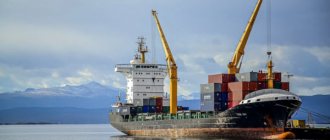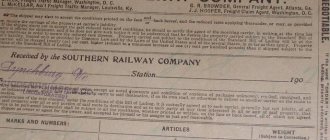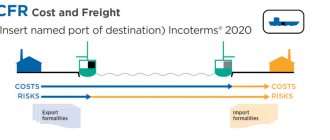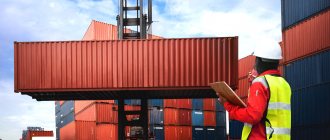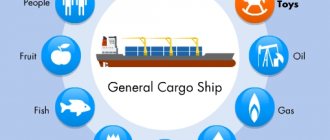VesselFinder is a real-time map or vessel search service, including in Russian, like Marinetraffic, one of the most famous ship search systems reflected in the table.
VesselFinder makes it easy to search for a specific vessel and, of course, uses the AIS system. An automatic identification system, AIS, or radio communication system, which is used to ensure the safety and control of shipping traffic by exchanging navigational and other vessel data.
Through AIS, data is transmitted to transceivers in real time, VesselFinder processes the received ship signals and displays them in the form of a radar map.
With VesselFinder com you can track all types of ships in real time, all over the world with their position displayed on a map.
VesselFinder - difference from Marinetraffic
Vessel search and shipping are often compared. We can see which vessels are on the move on both Marinetraffic and VesselFinder.
Marinetraffic gives an overview of the classic data, and there is the ability to filter ships. The data processed by Marinetraffic com comes from a different database than that of VesselFinder com.
The main advantage of VesselFinder is the ability to differentiate between ship types: it distinguishes between cargo ship and tanker, passenger and fishing vessels, military vessels, and fast and sailing vessels.
To compare these systems, you need to use both and decide which vessel search engine is right for you.
MarineTraffic - real-time tracking of ships around the world
One of the most popular and widely used marine vessel trackers on the Internet is ship tracking systems that offer up-to-date data as well as other functions. It offers owners a range of services, including: reliable AIS control, optimized channel routing, optimized density maps and quality materials, etc.
In addition to ship tracking, Marine-Traffic can also track various ports around the world. AIS is the best of the many databases available for any type of vessel. According to Marine-Traffic, it has no less than 800 million total positions, as well as 18 million regular and nearly sold listings, and provides information on 650,000 margin assets, such assets, etc.
Screenshot © Marinetraffic.com
This open source, collaborative project offers a number of services for free, while other additional features are provided for free. According to the site, it has more than 2,000 AIS locations located in more than 165 countries and has more than 600,000 visitors and approximately 20 million hits on it.
Features of VesselFinder
The service provider offers several options for finding a ship. You can search:
- by number;
- by the name of the ship.
To search for ships:
- In the search window you need to enter the name of the vessel or its number and click / press Enter.
- In the drop-down list, find the desired option and also click.
As a result, a window will open on the Vessels page with various information, including port calls.
And to view the VesselFinder map in real time, you need to click on the vessel icon in the “Position on the map” block. This will open the Map page.
In the free version, limited information is shown on the “Map” page in the “Port Calls” block, but it can be seen on the previous “Vessel” page.
VesselFinder allows you to track the exact location of a cruise ship, tells you how many passengers can fit on the ship, and also gives you deviations from the course.
On VesselFinder com, users can track all vessels that are at sea. The AIS provider shows all the satellite coordinates of the ships and therefore the exact location of the ships.
VesselFinder distinguishes between ship types
There are many different types of ships, such as cargo ships, cruise ships, tankers or sailboats. To distinguish between types of ships and objects, they are displayed in different colors on the map.
It is also distinguished whether the vessel is in progress or stopped. The vessel type is also listed in the detailed information, where you can view a lot of additional information. This can be triggered by clicking on an object. The size of the vessel or boat is not included in the overview or is not displayed accordingly.
All ship types and their associated colors are listed below. Ships are displayed on the radar map in different colors according to the type of ship:
| Vessel type | On my way | Has stopped |
| Cargo ship | ||
| Tanker | ||
| Warship | ||
| Passenger airliner | ||
| fishing boat | ||
| Speed-boat | ||
| Yacht/sailboat | ||
| Unidentified ship | ||
| Other objects |
Vessel traffic map is a unique service whose purpose is to track sea vessels in real time . The technology for such monitoring of ship movements is based on a detailed database of received signals about a set of the following parameters:
— dimensions of the vessel; — its identification; — speed and course of movement.
For this purpose, numerous spacecraft have been launched into low-Earth orbit, tracking ships and transmitting the received detailed information to ground stations. Dedicated solely to monitoring maritime traffic, today more than 10 orbiters orbit the Earth. As a result of the well-coordinated work of satellite systems, an interactive map appeared, with the help of which tracking a vessel online has become a routine event.
Data is updated in real time, although there may be delays in the transmission/reception of information about the movement of ships within 60 minutes. Such inconsistencies occur in cases where ships leave the satellite signal reception/transmission area. In order to minimize such annoying situations, to help interested countries (those with access to the sea/ocean), space satellites equipped with AIS (AIS automatic identification system, although recently the decoding of this abbreviation began to sound like an automatic information system, placing the main emphasis on the role of the information component in the latest space technologies).
The development of the Automatic Identification System in 2000 was driven by the urgent need to reduce collisions among vessels in the world's rapidly expanding fleet. Only ships with a displacement of more than 100 tons increase annually by 3,000 units, and the increase in the number of smaller seaworthy “plankton” has long defied a single statistics.
When crossing the vast oceans of the world, not all meetings end at a safe distance. As a result of practice, it became obvious that such a problem could not be resolved painlessly with conventional radars.
In order to minimize the risk of collision, the International Maritime Organization has mandated the installation of AIS in order to track ships online for the following types of maritime transport:
— cargo ships over 500 tons; — “trucks” on international flights over 300 tons; — all passenger ships excluding tonnage.
What is the ship's AIS module, designed to facilitate vessel tracking ? This is a digital VHF transceiver that is connected to navigation and ship systems. Every 2-10 seconds (depending on the speed) or every 3 minutes in parking mode, it transmits the following on-board dynamic information:
— current coordinates; — navigation (“under the engine in motion”, “at anchor”) status; — MMSI identification number; — speed and course; — exact time stamp.
In addition to dynamic tags, static information is constantly transmitted (but somewhat less frequently, every 6 minutes), which is exactly how the vessel is tracked in real time :
— IMO vessel identification number; - its type and name; — radio call sign and dimensions; — type of positioning system (GLONASS, GPS, LORAN); — information about the route; — category of cargo and draft; — presence and number of people on board.
It is also possible to enter text manually if the vessel is in danger.
The automatic identification system for real-time vessel tracking consists of the following components:
— VHF transmitter; — VHF receiver; — satellite-global navigation receiver; — equipment for input/output of information; — antennas (the mounting height of which is crucial for the reception/transmission range and can reach significant values: from 15-20 to 40-60 miles if there is a base station nearby that increases the visible range).
All received information is displayed on a computer monitor or chartplotter in a graphical version of symbols superimposed on the map, or in the form of a table. In our case, this is marina traffic tracking of vessels in real time .
If for some reason the positions of the vessels are not recorded on the map, then it is possible:
— the ship is located far from the base station; — it is not equipped with an AIS system or it is faulty; — data is hidden for security reasons; — transponder power is below the required norm.
The sharply increased number of small sea vessels has led to a direct interest of their owners in ensuring their own safety, so equipping a vessel with AIS will make tracking yachts better, more mobile and easier.
On the map presented on this page you can watch ships in real time, tracking in Russian . Here you can even watch the movement of your own yacht during your cruise along the sea coast - this is very convenient.
Map update
Almost all data shown on the map is updated in real time. It is worth remembering that the speed of movement of a ship on the open sea is relatively low, so if it seems that the ship is not moving, then perhaps you should just wait. However, this may not be the only reason for the ship’s “freezing” - the AIS satellite network still has “white spots” in the world’s oceans, into which ships periodically fall. In this case, you just need to wait until the ship can communicate with satellites again - its location will be updated.
In the near future, we can expect improvements to this system - leading maritime powers are constantly improving it in order to constantly monitor the location of ships.
Why does Marine-Traffic use AIS tracking technology?
AIS is a maritime database based on data held by ocean-going vessels. All vessels have AIS radios and receivers. Stabilizers broadcast their location for safety, internal protection, security, and simply to prevent collisions.
Many unintentional ones have AIS receivers that now capture the vessel that was on previous irresistible flight segments. However, there are only ground based AIS receivers (still relevant) which were/are mostly used by organizations for logistics and governments for security. There are now small, affordable satellites that receive AIS data—there is now a large amount of data available.
It is installed on ships to identify broad and navigation marks. However, this is only a promotional aid and should not be used for discussion. Shipping services (VTS) onshore use AIS to identify, locate and monitor vessels. The Panama Canal uses AIS to view traffic information on the canal as well as the wind in its field of view.
Maritime information about ships and companies.
Marinetraffic tracks over 100,000 vessels worldwide. Successful tracking extends from the Indian Ocean to the Canadian Great Lakes, once around the globe. The corresponding positions are regularly updated every day. This makes it very easy to check which shores or ports the ship has visited. You can see exactly where the ship has been and where it is going, with accurate heading and speed information.
The peculiarity is that there are no restrictions when calling up information. If you wish, you can find results for a specific ship or for several ships at once. You will always be shown the latest AIS location data, which contains flight history and accurate basic data.
Mobile applications MarineTraffic
The Marine-Traffic tracking system offers many mobile applications. By running it on your smartphone or tablet, you can follow your journey, including in 3D, and see what kind of Vessel is around, its direction and progress, which is amazing. MarineTraffic is available for:
- iPad
- iPhone
- Android
MarineTraffic allows iPhone users to point their phones at viewing data about ships at sea.
The free version of MarineTraffic Mobile shows you real-time vessel positions along with the vessel's registration numbers (IMO).
The full version of MarineTraffic features a wide range of additional features, including: a search option, comprehensive ship data, advanced ship information, ship photos and much more.
- Available for both Android and Apple smartphones and devices
- For Apple: Req uses iOS 3.2 and later - $3.99) for iPhone, iPad, iPodTouch
- For Android: Requires Android 1.6 or later (currently not much - may change)
- Test results: Apple version 2.0.1 on iPod Touch with GPS and Android version 0.9.3 on a 7-inch Lenovo A1 tablet running Android 2.3.4.
Applications and Android versions of Marina Traffic have the following features:
- On the Google stamp, ships with AIS are shown in color, showing the direction in which they are moving.
- Clicking on the fly reveals her name and sees; repeat viewing gives complete information about the width (size, speed, type, destination, etc.)
- If desired, you can show the spike
- Shows a craft that is posting its ads online all over the world (particularly popular)
- Apple, anyway, shows itself randomly due to wind (doesn't work with my deviation during testing)
Please note that Marine Traffic provides much of the same information as on its website - this allows you to test it out in your own area before purchasing an item to use on your boat.
Who uses MarineTraffic?
People have used MarineTraffic for their personal or business purposes. The main user group includes marine experts, boat finders and other hobbyists. Many members of this group subscribe to the paid version of the service and volunteer their free time to the community, uploading photos and moderating content that has been uploaded to the site.
Marinetraffic.com is a huge resource for people who are in love with ships and the sea. Whether you're tracking giant container ships around the world, following the path of oil-carrying super-tankers powering the world's industries, or simply discovering ships you never knew existed. The emergency response team can also use the vessel finder to obtain timely information and clarification in certain emergency situations.
Use MarineTraffic for free
Do you just want to observe the world's shipping or get an idea of where ships are currently located? Then MarineTraffic is what you need. Not only does this show you extensive information about the position of ships around the world, but it also offers you another big advantage. Because all services are free for you. You don't need to register for simple basic features, you can start using it right away. All you have to do is open the page in your browser and all the information will be available to you right away.
Search for a ship by its name
A legend is attached to the map, thanks to which you can determine the type of ship being monitored. Similar data can be obtained by clicking on its icon on the map. You can monitor the movement of ships both in satellite mode and in the mode of overlaying a real image. In addition, if you know the name of the ship, you can find it on the map. To do this, you must enter the name in the appropriate field in English. If everything is done correctly, the map itself will be centered on the selected ship. Video instructions for finding ships on the map
